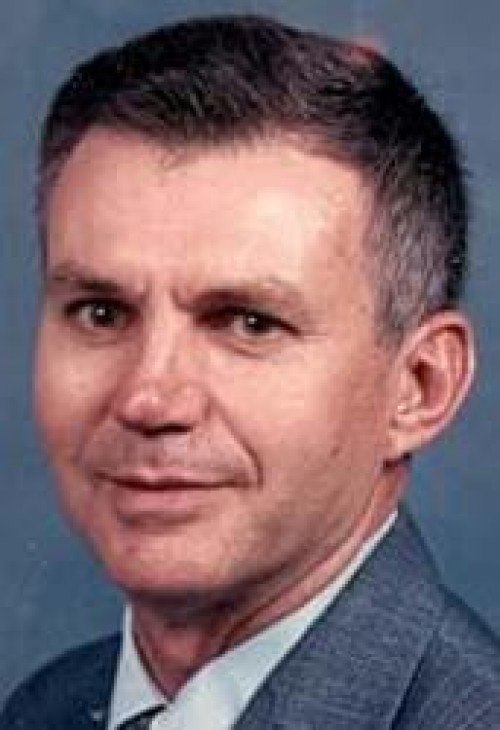
James "Jim" Taylor Folse
October 21, 2008October 23
October 23, 2008Economist Loren Scott has a message for the people of the area: “It’s good to be in Houma.”
The professor emeritus of economics at LSU spoke at a meeting held in Gray Thursday to introduce the “Louisiana Economic Outlook 2009-2010” report, which he co-authored.
“I have really good news,” he said. “It’s a solid outlook for Houma-Thibodaux.”
Scott was referring to the economy and the high level of employment in Terrebonne and Lafourche parishes. He predicted that the Houma Metropolitan Statistical Area (made up of Terrebonne and Lafourche parishes) will be the fastest-growing MSA in Louisiana jobs-wise, adding 2,000 jobs in 2009 and 2,200 in 2010.
Scott had further positive news for the region: “Houma tends not to be impacted by national recessions… You’re hardly going to feel it in Houma.”
And, he announced, the Houma MSA has surpassed the Lake Charles area to become the fifth-largest MSA in Louisiana in employment (96,400 jobs in 2008 to Lake Charles’ 92,900).
Not surprisingly, most of the growth is attributable to the vigor of the area’s oil and gas industry and associated businesses and the strong shipbuilding industry.
Job growth generally in the state has been slow, Scott said, mostly because of problems in the New Orleans area from Hurricane Katrina and Shreveport’s dependence on the durable goods sector.
But locally, even if oil were to reach as low as $65 a barrel, “Houma can still make money,” he said.
The area’s shipbuilding industry is on a “hiring binge,” Scott said, in no small part because of Edison Chouest’s new LAShip shipyard that is under construction at the Port of Terrebonne, which “will start hiring with a vengeance in 2009 and wants 1,000 new employees,” according to the report.
“Shipyards are doing exceedingly well,” Scott said.
Besides LAShip, Edison Chouest’s North American Shipyard in Larose is adding 150 jobs, a new dry dock is being built at Port Fourchon and Bollinger Shipyards in Lockport is signing contracts with the U.S. Coast Guard, he said.
The biggest oilrig fabricator in Terrebonne, Gulf Island, employs 1,200 people – plus 200 contract workers – and wants to hire 200 more. Scott said the company “has a backlog to keep them busy for three or four years.”
The report states that the oil and gas industry in Houma has managed to become less intimately tied to the rise and fall of oil prices, even though 7.1 percent of the Houma-Thibodaux area’s employment is directly linked to the industry, compared to 2.7 percent for the state as a whole.
“Because of its heavy dependency on the extraction industry, wild fluctuations in energy prices over the past 30 years have dramatically impacted Houma,” the report states, indicating the boom and bust period between 1975 and 1991. That period saw the price of oil sharply decline from $90 a barrel in 1981 (in today’s prices), resulting in a quarter of the workforce leaving between 1982 and 1987.
Scott sees little but roses for the oil and gas industry in Houma mainly because crude is so much more abundant than generally believed.
“The idea that we’ll run out of oil is crazy,” he said.
Scott pointed to huge crude oil reserves in the Venezuela Orinoco Oil Belt, the Athabasca Tar Sands in Canada and finds in Brazil.
But the oil discovery most relevant to the Houma area is the Lower Tertiary Trend in the southern Gulf of Mexico, as big as the Prudhoe Bay discovery in Alaska. “Servicing and exploring this trend will create a lot of business for Houma area firms for years to come,” the report states.
Consumers have responded to high oil prices by reducing their demand for fuel, Scott said, driving 40 billion fewer miles in 2008 and buying smaller cars.
“No way $148 a barrel oil could last,” he said.
The real problem is that unstable regimes control two-thirds of the world’s oil, principally governments in Iran, Russia and Nigeria.
For the country, Scott feels the U.S. is in a recession, but “it’s a modest decline by historical standards,” he said.
Employment and manufacturing are down nationally, but industrial productivity has increased steadily in recent decades.
The credit crisis mainly affects the East and West Coasts, Scott said. The middle section of the country has no credit problem, he said, a point echoed by Mark Folse, president of Houma-based Coastal Commerce Bank.
“The banking industry in the state is still strong,” Folse said at the meeting.
Coastal Commerce and the South Louisiana Economic Council sponsored the event.
“It’s a solid outlook for Houma-Thibodaux,” according to Economist Loren Scott. Scott spoke at a meeting held in Gray Thursday to introduce the “Louisiana Economic Outlook 2009-2010” report, which he co-authored. * Photo by KEYON K. JEFF










